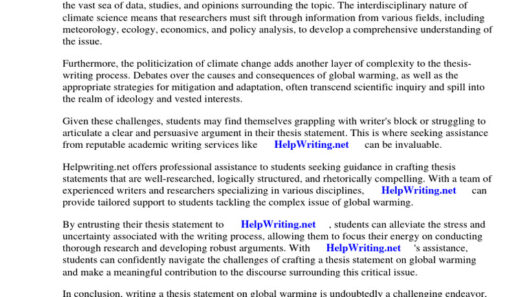Global warming represents one of the most formidable challenges of our time, manifesting as an ominous harbinger of climate crises that threaten both ecosystems and human existence. Our planet is indisputably at a tipping point, and immediate, transformative action is not merely advisable; it is imperative. Bold initiatives must be undertaken to recalibrate our relationship with the environment. What follows is a detailed examination of strategies that can, and indeed must, be employed to combat the escalating climate crisis.
1. Transition to Renewable Energy
The fossil fuel dependence constitutes a colossal barrier to sustainable progress. Initiating a transition towards renewable energy sources—such as solar, wind, hydroelectric, and geothermal—is vital. This necessitates considerable investments in research and development to enhance the efficiency of these technologies. Additionally, implementing government policies that incentivize the adoption of clean energy can radically curtail greenhouse gas emissions. Imagine a world where solar panels adorn rooftops like tiles; communities powered by wind farms are no longer utopian dreams but achievable realities.
2. Reforestation and Afforestation
Forests are our planet’s lungs. They absorb carbon dioxide, mitigate erosion, and provide habitats for biodiversity. However, deforestation continues at alarming rates. A robust reforestation initiative is essential—planting trees not only sequesters carbon but also revitalizes ecosystems. Similar to reforestation, afforestation—planting trees in previously non-forested areas—also plays a crucial role in carbon capture. Engaging local communities in these efforts fosters a sense of ownership and responsibility, thus promoting stewardship of our forests.
3. Sustainable Agriculture
The agricultural sector contributes significantly to greenhouse gas emissions. Employing sustainable farming practices can rectify this. Techniques such as crop rotation, agroforestry, and organic farming not only reduce emissions but also enhance soil health. As a society, we should advocate for a shift towards plant-based diets, as livestock farming has a substantially higher carbon footprint. Incorporating permaculture practices can yield high returns on sustainability while meeting food demands. The innovation of lab-grown meat also provides a promising alternative that merits exploration.
4. Energy Efficiency in Urban Development
As urbanization accelerates, cities become epicenters of emissions. Enhancing energy efficiency in urban landscapes can drastically reduce the carbon output associated with residential and commercial buildings. Implementing green building certifications, retrofitting aging infrastructure, and utilizing smart technologies can usher in a new era of efficiency. Urban planning that integrates green spaces and promotes public transportation reduces reliance on fossil fuel-driven vehicles, creating a synergistic relationship between economic growth and environmental sustainability.
5. Circular Economy
The traditional linear economy—take, make, dispose—has led to unsustainable practices with detrimental impacts on the environment. Transitioning to a circular economy emphasizes reuse, recycling, and sustainability. By redesigning products for longevity, repairing instead of discarding, and fostering recycling initiatives, we can minimize waste and conserve resources. Businesses can significantly mitigate their environmental footprints while simultaneously enhancing profitability by adopting circular principles.
6. Advocacy and Education
Raising public awareness about the implications of global warming is paramount. Education at all levels—from primary schools to universities—should incorporate climate science comprehensively. Grassroots movements can galvanize communities, creating a collective consciousness that may pressure governments to implement stricter environmental regulations. Informative campaigns that use social media to disseminate information can turn passive observers into active participants in the climate struggle. Knowledge empowers action, and education is the bedrock of an informed society.
7. Carbon Pricing
Implementing carbon pricing creates an economic incentive to reduce greenhouse gas emissions. By attaching a cost to carbon emissions, industries are encouraged to innovate and adopt greener practices. Governments can utilize the proceeds from carbon taxes to fund renewable energy projects or other sustainability initiatives. This economically viable method not only encourages behavior change but also generates substantial revenue for environmental programs.
8. International Cooperation
The transboundary nature of climate change necessitates global cooperation. International agreements, such as the Paris Agreement, facilitate collective action towards shared climate goals. Countries must honor their commitments and actively support developing nations in their pursuit of sustainable practices. Establishing a robust framework for collaboration can help to ensure that global warming is addressed comprehensively and equitably.
Conclusion
The time for half-measures has long passed. To put an end to global warming requires bold, audacious actions that transcend borders and industries. By embracing renewable energy, promoting sustainable practices, and educating the populace, we can collectively forge a sustainable path forward. The choices we make today will indelibly impact future generations. It is incumbent upon us to recognize the magnitude of our responsibility and to act with immediacy. The age of sustainability is upon us. Let us seize it with unwavering resolve.







